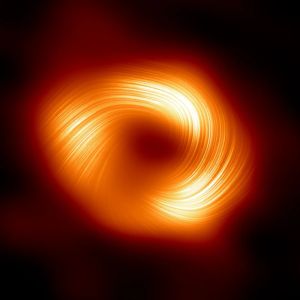Two ph-things came from the skies this March. Without further ado:
The Event Horizon Telescope, the collaboration of telescopes that gave us the first and second photos of supermassive black holes, was at it again. They now published the photo below which might look a bit (read: a lot) deceiving at first given the alarming bright threads.
What we have here is the hole at the heart of the Milky Way, only that the artificially added bright lines show the polarization of light. Just read on.

Polarization is all about the direction along which the waves of light vibrate, and when it is as organized as this then there are some massive magnetic fields at play. Which is not exactly surprising for a black hole — but it hadn’t been a certainty for one of a mere 4.3 million times the mass of the Sun, which is slim as supermassive black holes go. But now we know.
Last year NASA’s OSIRIS-REx mission brought soil taken from asteroid Bennu, and its scientists faced an astronomy-first-world problem: the container holding the soil was overflowing. They had way more than they signed up for. They couldn’t have been happier.
Now the sample starts delivering as the first analyses results are in. And they say that Bennu, formed during the very dawn of the solar system, had water and “prebiotic organic materials”, compounds like those that would later go on to form life in another corner of said system.
There is more. The team started looking at Bennu’s “presolar grains”, material that could only come from previous stars. And they saw two distinct types of it, one that could possibly come only from supernovas and one that, as far as we can tell, comes from smaller stars expelling their atmosphere into space in a calmer and steadier way.
There’s one thing to say: all this is a taster. Stay tuned for the proverbial more as Bennu happily spreads more solar system dirt.
